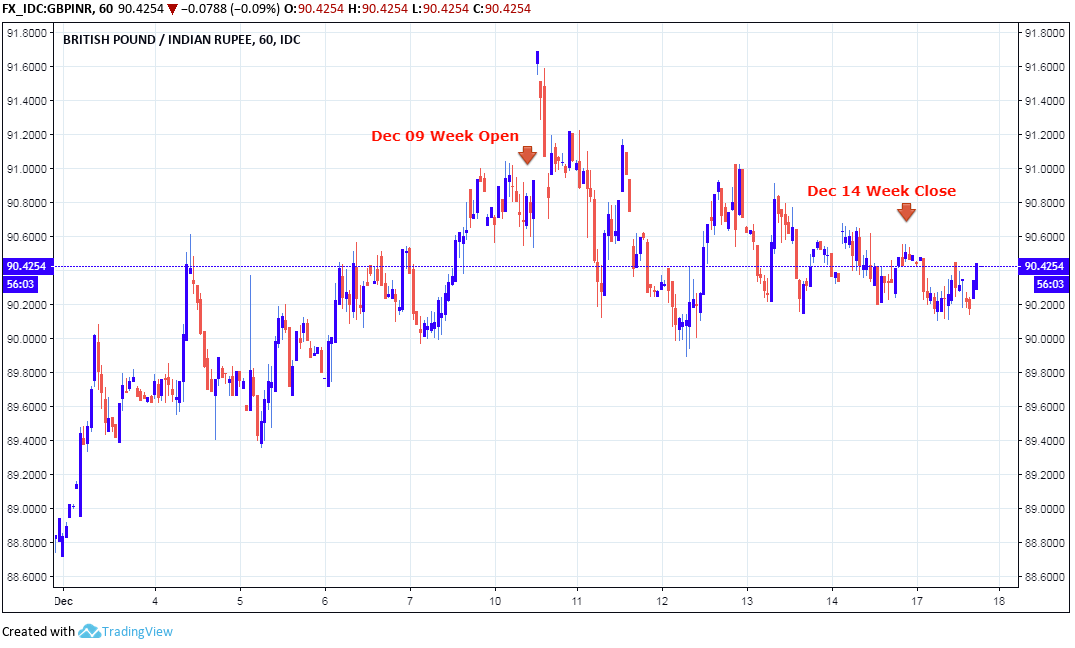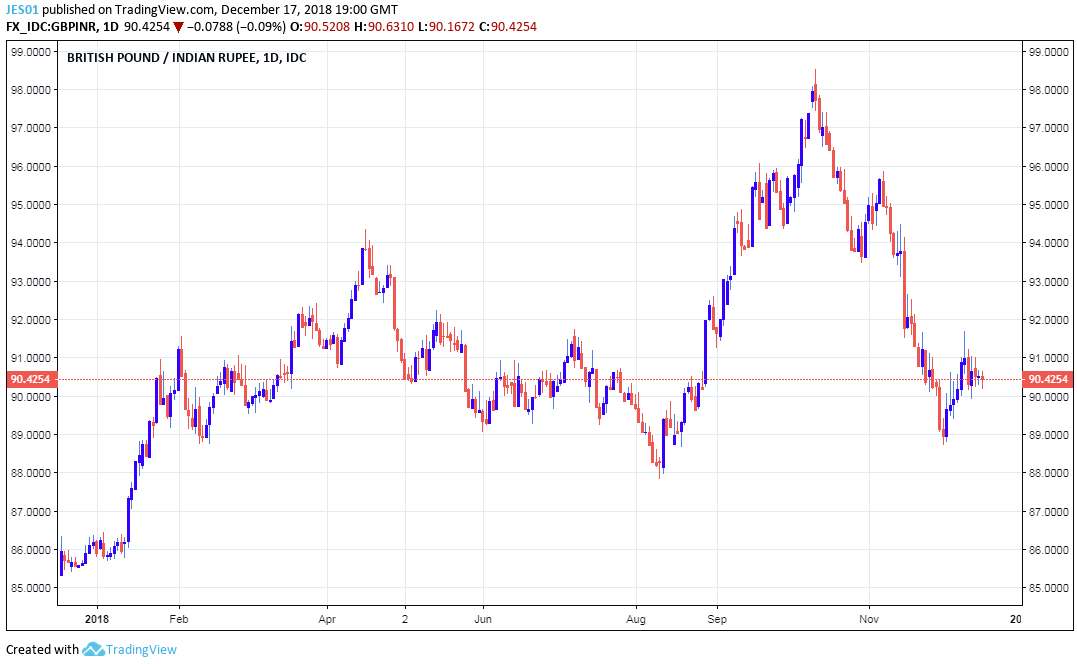The Pound-to-Indian-Rupee Rate in the Week Ahead: Brexit Weighs on GBP as INR Waits on Federal Reserve
- Written by: James Skinner

© Adobe Stock
- INR to take direction from Wednesday's Federal Reserve decision.
- Dovish tone from Fed could see USDINR rate soften into year-end.
- But GBPINR remains laggard amid parliamentary Brexit uncertainty.
The Rupee was little changed on the week by last Friday's close after recovering steep losses wracked up on Monday, but the currency's direction during the days ahead will be determined largely by global factors.
India's currency opened last week on its back foot after it emerged the governor of the Reserve Bank of India (RBI) had resigned, apparently over the government's meddline in the affairs of the bank.
It recovered much of that loss during subsequent days but ceded ground to the Dollar Friday after a series of dire Chinese economic numbers sapped the market's appetite for risk assets.
But the Pound Sterling was on its back foot throughout much of the week too due to the latest farce in the Brexit saga, which aided a gentle decline in the Pound-to-Rupee rate.

Above: Pound-to-Rupee rate shown at hourly intervals.
"Risk sentiment towards emerging markets broadly improved this week but has been dented by ongoing US-China trade tensions and particularly weak data out of China that exacerbated growth concerns," says Kamilla Kaplan, an economist at Investec Bank, in a note to clients.
December's U.S. Federal Reserve (Fed) interest rate meeting and statement is the headline event for the Indian Rupee and all other emerging market currencies this week.
The outcome will be key to direction of the Rupee in general as well as the Pound-to-Rupee rate into year-end, with the decision and economic forecasts set to for release between 19:00 and 20:00 London time on Wednesday.
The Federal Reserve is widely expected to raise its interest rate for a fourth time this year Wednesday, taking it from 2.25% to 2.5%, so investors will take their cues from the FOMC's statement and economic projections.
However, if the FOMC changes its language in a way that suggests policymakers are becoming more cautious about lifting rates then it would be a gift for the Rupee.
Likewise, if the so-called 'dot-plot' of members' projections shows the FOMC feeling less hawkish than in September the market response would also be negative for the greenback and positive for the Indian currency.
"There is potential for a restrained USD post Fed, which points to some relief for EM assets this week while trade concessions from China and hopes of stimulus following weak data could also help," says Christian Maggio, head of emerging market strategy at TD Securities.

Above: GBP/INR rate shown at daily intervals.
The Pound-to-Rupee rate was quoted -0.18% lower at 90.35 Monday but is up 4.8% this year.
The USD/INR rate was down-0.44% at 70.60 Monday but has risen a full 12.1% in 2018.

Above: USD/INR rate shown at daily intervals.
Fed policy has drawn capital out of, and deterred new money away from, emerging markets this year. That put pressure on the Rupee, while high oil prices and domestic economic developments weighed further on the currency.
This drove inflation higher and compelled the Reserve Bank of India to raise its interest rate twice during the summer, taking the main policy rate up to 6.5%.
That helped to stabilise the currency and reduce inflation but political meddling at the RBI and former Governor Urjit Patel's resignation have since prompted one influential analyst to drop his forecasts for another hike in New Year.
However, financial markets are increasingly aware of the possibility the Federal Reserve might pause its interest rate hiking cycle next year and observe how the economy responds to higher interest rates.
This could help the Rupee to reverse more of its 2018 losss against the Dollar and Pound into year-end, although the currency may be limited in how far it can go over the short-term due to political risks the market will focus on in January.
Indians will go to the polls in the first half of next year to determine who should govern the country over coming years, which means uncertainty about the policy agenda could weigh on the currency in early 2019.
The effect of that uncertainty could be made worse if the government's meddling in the affairs of the central bank steps up a notch ahead of the vote, because the market may then view the RBI as being politically compromised.
All of this could mean the Rupee struggles to capitalise much on a retreating U.S. Dollar over coming months, although Sterling will also be impacted by uncertainty relating to Brexit, which is clouding the Pound-to-Rupee rate outlook.
Prime Minister Theresa May survived a leadership challenge last week but she still lacks enough support in parliament for her Brexit Withdrawal Agreement to make it onto the statute book.
As a result, the probability of an exit from the EU on World Trade Organization terms could grow further still over coming weeks, weighing on Sterling and the Pound-to-Rand rate.
Fears over a WTO exit have reduced economic data and the Bank of England (BoE) to an afterthought for the market. As a result, Thursday's BoE is not expected to have a lasting impact on Sterling or the Pound-to-Rupee rate.
